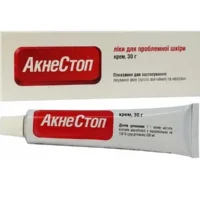Description
Ozalex (Rosuvastatin) Coated Tablets 20 mg №28
Ingredients
- Each tablet contains 20 mg of rosuvastatin.
Dosage
- The recommended dosage is one 20 mg tablet per day.
Indications
- Ozalex tablets are indicated for the treatment of high cholesterol.
Contraindications
- Do not take Ozalex if you are pregnant, breastfeeding, or have liver disease.
Directions
- Take one tablet orally with or without food, as directed by your healthcare provider.
Scientific Evidence
- Rosuvastatin, the active ingredient in Ozalex tablets, is a statin medication that works by inhibiting an enzyme in the liver involved in the production of cholesterol. Clinical studies have shown that rosuvastatin is effective in lowering LDL cholesterol levels and reducing the risk of cardiovascular events.
Additional Information
- Ozalex tablets have been extensively studied in various clinical trials to evaluate their safety and efficacy. Research has demonstrated that rosuvastatin is well-tolerated and significantly reduces the incidence of heart attacks and strokes in patients with high cholesterol.
- It is important to follow a healthy diet and exercise regimen while taking Ozalex to achieve the best results in managing cholesterol levels.





